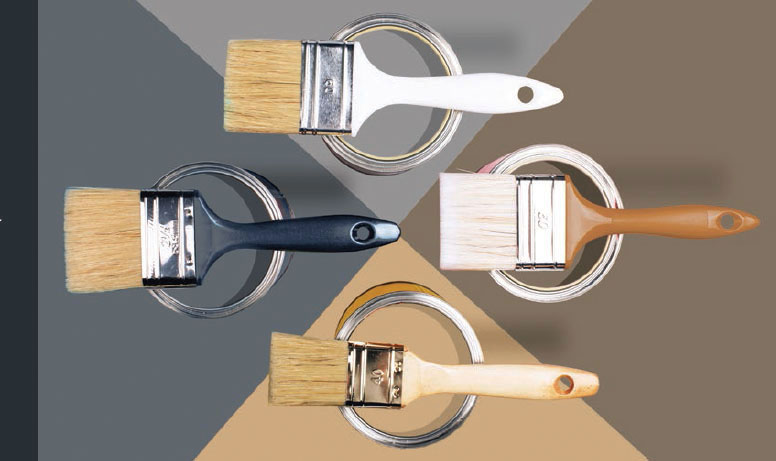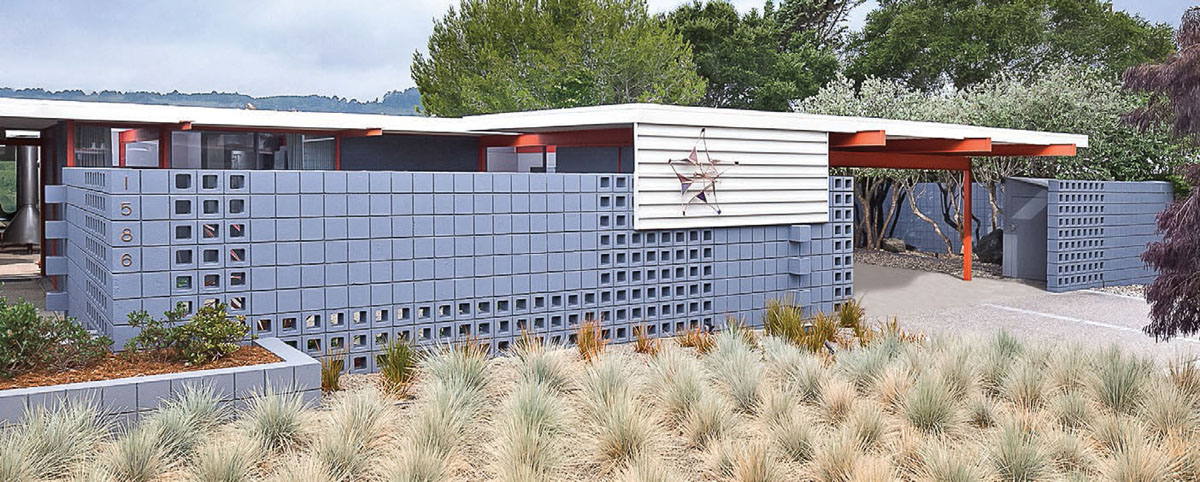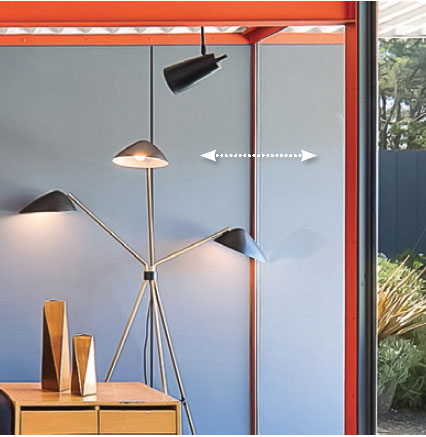House of Many Colors
 |
|
|
With real estate values at an all-time high, and so many homeowners now working from their residences, home improvement is always on our minds.
And each time we walk past the driveway, a lackluster paint presentation on our home's exterior can be a lasting reminder that indeed the time has come to bring back our lost curb appeal.
With the Eichler home, wood siding can take a beating from exposure to the outdoor elements, placing exterior painting high on our to-do list. For a home in which the indoors meets the outdoors, especially in key areas like an atrium and floor-to-ceiling window walls—but also posts, beams, eaves, and fascias—selecting an exterior paint scheme can present unique challenges.
 |
|
|
In order to make the most of these architectural features, devising a cohesive exterior paint plan is crucial.
"The beauty of Eichlers is that when you're inside you see the exterior as well—the outdoor connection is seamless," explains Lucile Glessner, a seasoned South Bay interior designer passionate about Eichlers and, in fact, lives in one herself.
"The whole organic look, the blending of the interior with the exterior, is all very important—and I think that's also where big mistakes can be made."
"I really think that, overall, Eichler owners need to look at the roots of the Eichlers, and be reminded of what Eichlers were, and why they look the way they do," says Glessner, who has consulted on numerous Eichler projects, including lending her discerning eye to the historically sensitive rehabilitation of the steel X-100 in the San Mateo Highlands.
 |
While consulting on the X-100, an architect A. Quincy Jones design, Glessner, along with owner Marty Arbunich, publisher of CA-Modern, were presented with a number of the same types of challenges familiar to so many Eichler owners today: window walls that transition to the outside, tricky indoor and outdoor lighting considerations, determining exactly which colors work best and where.
For the X-100, which has some interior walls that transition to the outside, it was unclear whether or not the home's original 1950s indoor-outdoor transition colors were the same. Nonetheless, for the renewal project, one of the goals was to make sure those wall colors appeared seamless.
In addition, at various locations, Glessner was able to give the gray base color added vitality and pleasing viewer perception by incorporating subtle variations of that color. Imagine, if a single color tone was used everywhere on the exterior walls and cinder block courtyard, there would likely be a perceived flatness to that color by the human eye.
 |
To achieve her desired effect on the exterior, Glessner used the same gray hue (Benjamin Moore 'Stormy Sky' #1616) throughout, but varied the value of the color as needed. This process, which adds white or black percentages in varying degrees (typically 25 to 100 percent), turns the color darker or lighter. For the X-100, only 50- and 100-percent formulas of 'Stormy Sky' were applied to the exterior.
"It's a subtle way to use color, depending on the amount of light [that reflects off of surfaces] in the various areas of a space," she says.




